Contents
In the forest, where there was no fire, you can see burnt trees. The culprit of such a spectacle was the common krechmaria. This is a parasite, at a young age its appearance resembles ashes. Over time, the body of the fungus darkens, becoming like charcoal and molten asphalt.
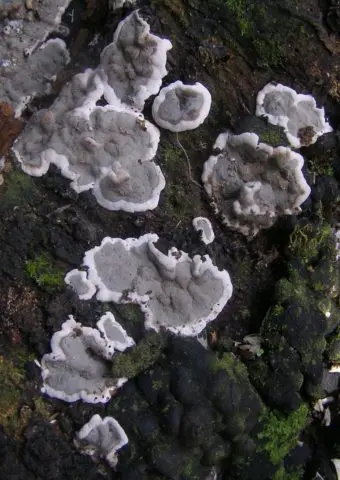
Krechmaria vulgaris is also called Ustulin vulgaris and Trutovik fragile. The common Latin name is Kretzschmaria deusta. The generic name is given in honor of a botanist named Kretschmar. Translated from Latin means “burnt”. Also in scientific works there are the following designations of the fungus:
- Hypoxylon deustum;
- Hypoxylon magnosporum;
- Hypoxylon ustulatum;
- Nemania deust;
- Nemania maxima;
- Sphereia albodeusta;
- Spheres destroyed;
- The largest sphere;
- Spheria versipellis;
- Stromatosphaeria deusta;
- Ustulina deusta;
- Ustulina maxima;
- A common stove.
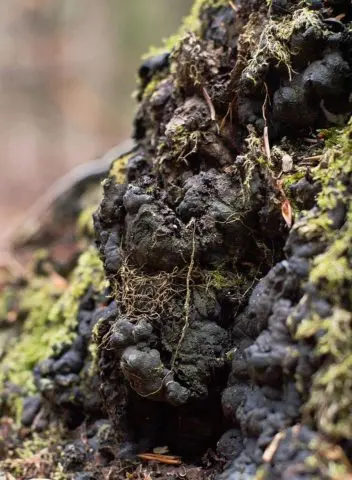
What do ordinary krechmaria look like
Outwardly, mushrooms are a carpet consisting of many crusts. The size of each is 5-15 cm in diameter. Thickness up to 1 cm. A new layer grows annually. Krechmaria vulgaris is originally white, hard, tightly attached to the base. It has a smooth surface, irregular shape, folds.
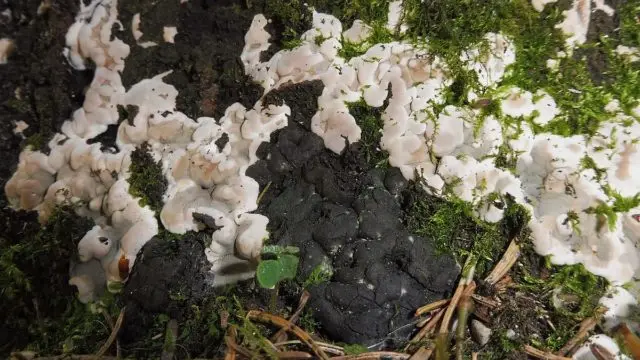
As it matures, it begins to gray from the middle, becoming more bumpy. With age, the color changes to black and red. After death, it is easily separated from the substrate, acquires a coal tint, fragility. The spore print is black with a purple tint.
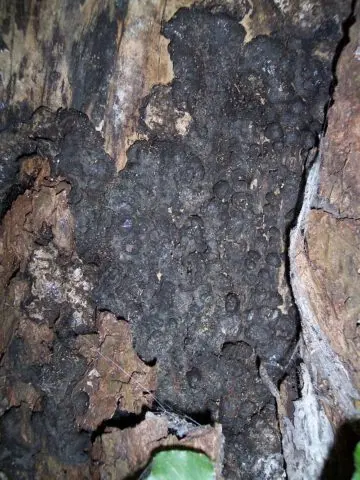
Krechmaria vulgaris leads a parasitic lifestyle. Despite this, another organism can live at its expense. Spherical Dialonectria is a microscopic fungus. It is a parasite and saprotroph. Forms red fruiting bodies. Therefore, krechmaria sometimes looks like it is sprinkled with burgundy dust.
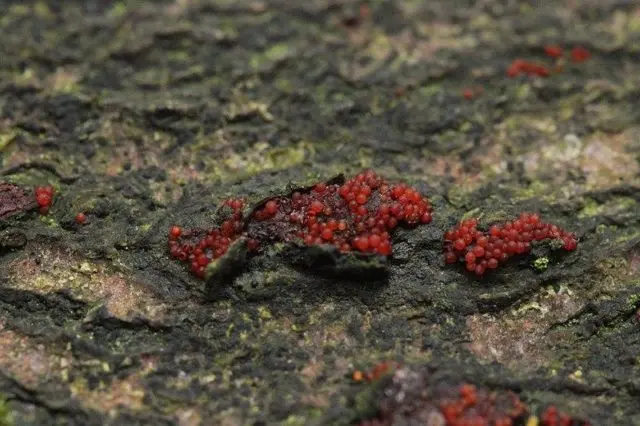
Where do common krechmaria grow
Under warm weather conditions, common krechmaria grows year-round. In continental climates – from spring to autumn. The fungus is most common in North America, Europe, Asia.
Habitat countries:
- Our Country;
- Costa Rica;
- Czech;
- Germany;
- Ghana;
- Poland;
- Italy.
Krechmaria vulgaris infects deciduous trees. Colonizes roots, trunk at ground level. It feeds on cellulose and lignin. Destroys the cell walls of the conductive bundles. As a result, the plant loses its stability, cannot fully obtain nutrients from the soil, and dies.
The following trees are most at risk:
- beeches;
- aspen trees;
- linden;
- oak trees;
- maple trees;
- horse chestnuts;
- birch.
After the death of the host, it continues its saprotrophic existence. Therefore, it is considered a facultative parasite. It is carried by the wind with the help of ascospores. Krechmaria vulgaris infects a tree through wounds. Neighboring plants become infected by root contact.
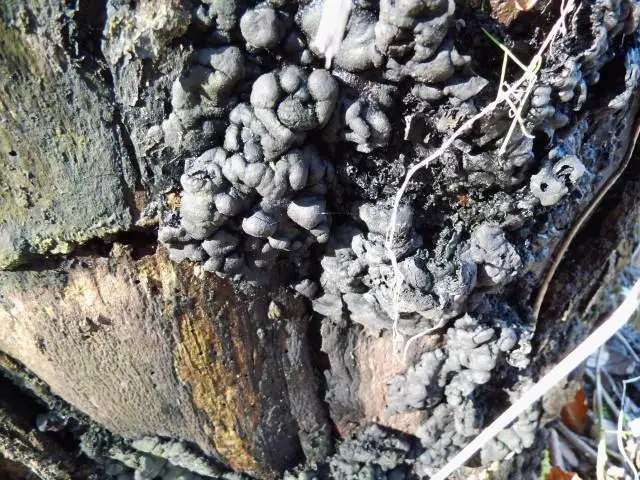
This mushroom is almost impossible to breed. In Germany, common kretschmaria settled on a 500-year-old linden. Trying to slightly extend the life of the centenarian, people first strengthened the branches with ties. Then I had to completely cut off the crown in order to reduce the pressure on the trunk.
Is it possible to eat ordinary krechmaria
The mushroom is inedible, not eaten.
Conclusion
Krechmaria vulgaris often causes false assumptions about arson in the forest. It carries a danger, since the destruction of a tree is often asymptomatic. It loses its strength and stability, it can suddenly fall. Care should be taken when in the forest next to this mushroom.









